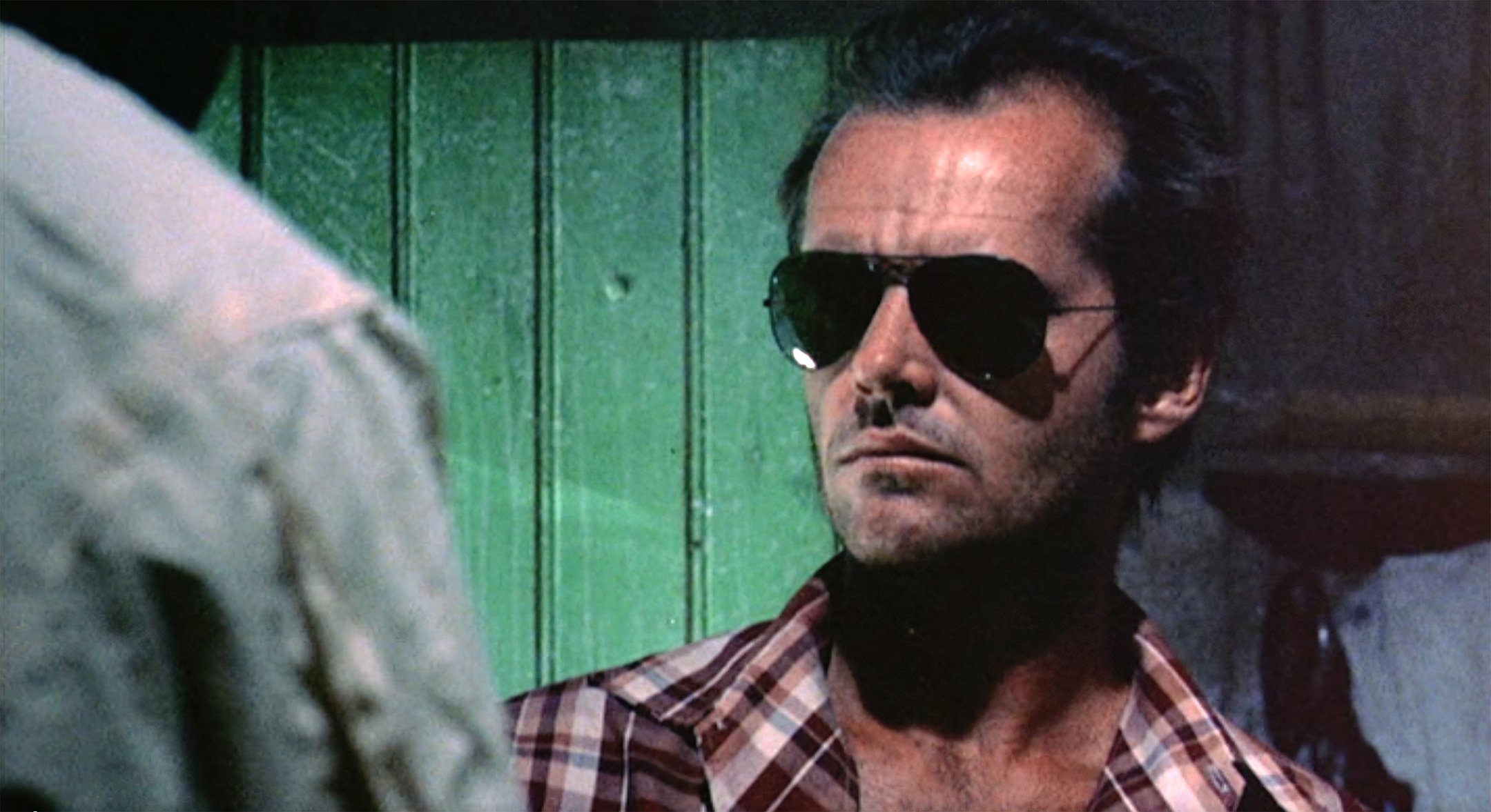
The Passenger: One Epic Shot
How a cinematographic challenge became a sublime piece of production virtuosity in the hands of Luciano Tovoli, ASC, AIC.
This article reveals key aspects of the film’s story.
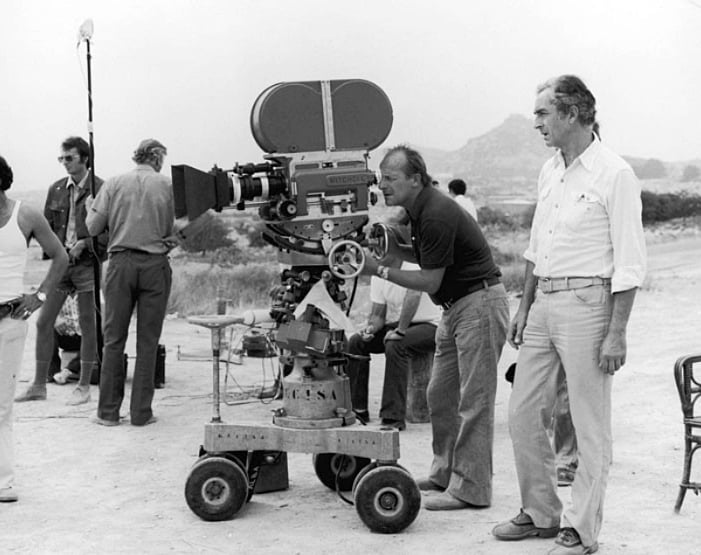
Director Michelangelo Antonioni’s existential 1975 neo-noir drama The Passenger (Professione: reporter) exudes a sense of mystery that permeates every frame — carrying over to the production itself, specifically the picture’s penultimate shot. This seven-minute “impossible” camera move — executed by cinematographer Luciano Tovoli, ASC, AIC and a very capable crew — has become stuff of legend.
As the suspenseful drama concludes in a rural village, our protagonist, a morally questionable TV journalist named Locke (Jack Nicholson), lays in the bed of his shabby hotel, stubbing out a cigarette as the camera gazes on the dusty street scene beyond the steel security bars protecting his doorway. As he naps, an assassin arrives to end his life as his unnamed girlfriend (Maria Schneider), his wife Rachel (Jenny Runacre) and the police converge:
“As you may know, I have never been to a film school,” Antonioni said of his creative process during a press conference held at the fourth annual Tehran International Film Festival (covered in AC Feb. 1976), which featured a retrospective of 14 of the Italian director’s features, including The Passenger. “I have never studied the cinema in any particular school. I give myself up to my instincts and my feelings. I follow my instincts and my feelings — and I don’t bother to sit down and think and work out schemes for doing things.”
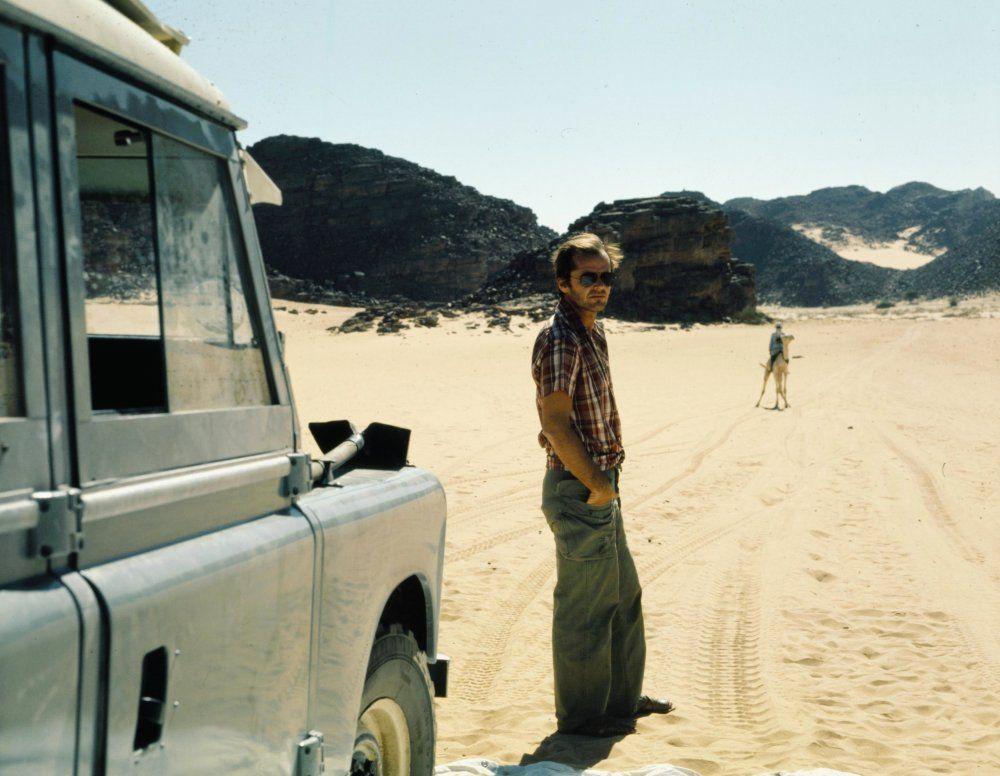
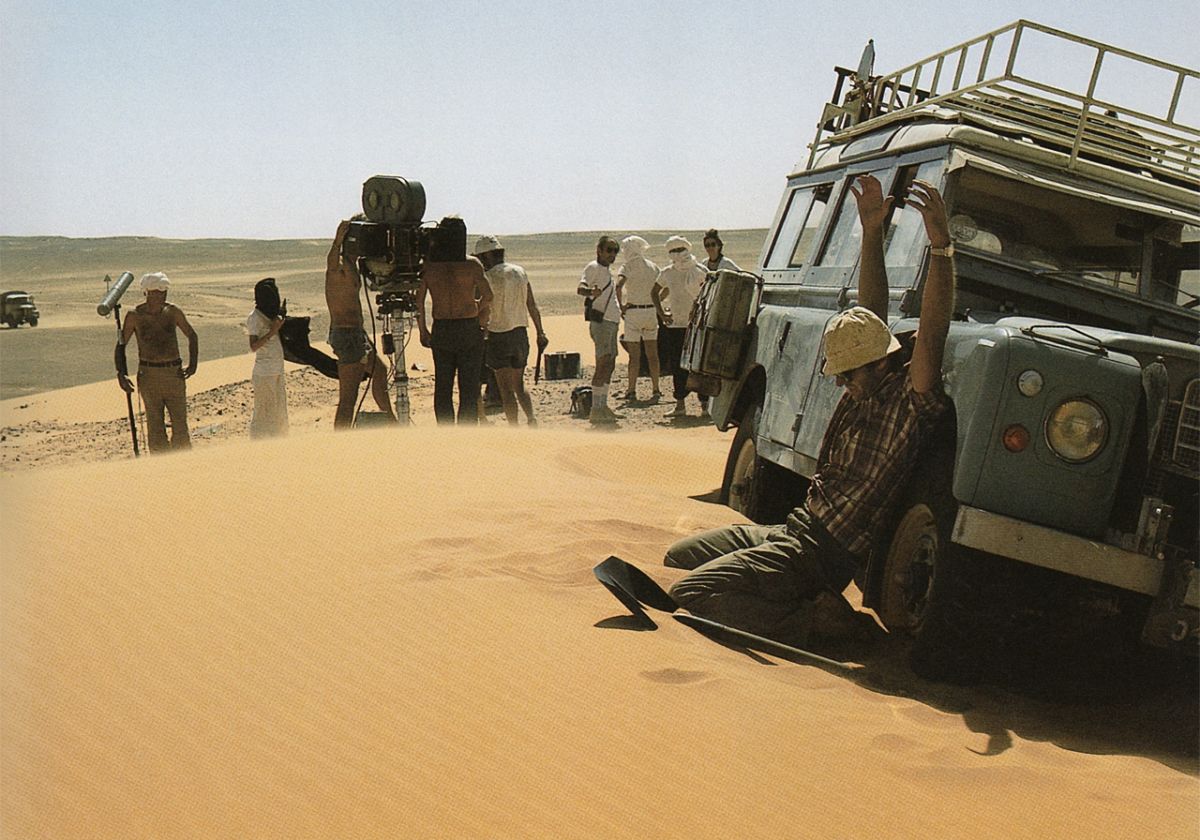
But that’s not to say Antonioni — once emotionally inspired — did not fully think things through, especially when it came to executing a complex setup such as this one in The Passenger. “The idea of doing this shot occurred to me at the beginning of the shooting of the film, but I kept asking myself how I would be able to realize it, because it seemed impossible,” the director explained. “In order to achieve what I had set out to do, I considered many solutions, many different ways of doing it, but I found that all of these methods were rather common, ordinary, cliché ways of doing cinema work. They were things which had already been done and none of them actually served my purpose. I tried harder and harder to find a way.”
Explaining his vision to Tovili during prep, Antonioni described that he wanted to have a shot in the film that transitioned from “subjectivity to objectivity,” the cinematographer later described. This would in part continue the narrative’s motifs of transference and transformation. “‘And I want to get to objectivity without any cuts,’ Antonioni explained, according to Tovoli. “‘So we must do a long shot beginning with the protagonist — establishing an subjective view [with him in the hotel room] — and then we go out of this window and observe the situation in a objective way.’ This was fundamental for the film.”
But the technique for accomplishing the ambitious shot remained a mystery. Luckily, Antonioni and Tovoli ran across a potential solution: “We went to London in order to shoot some scenes for the film and it was there that I encountered a camera that had been made in Canada. It was a new movie camera and I found that the possibilities presented by it might help me do what I had set out to achieve.”
The camera rig in question, being used on a documentary, was the Wescam, a gyro-stabilized aerial imaging system originally designed for the Canadian military and modified by cinematographer and inventor Ron Goodman for filmmaking use. It was later evolved with the help of Howard Preston into the Gyrosphere in 1980, and Goodman would then design an entirely new stabilization system and co-founded a new company in 1989, SpaceCam Systems, which continues to this day. During the production of The Passenger, Goodman was working throughout Europe with the Wescam, and would later contribute aerial coverage to films including Superman (1978) and Star Wars: Episode V — The Empire Strikes Back (1980).
“As you know, at the beginning of our sequence, we are inside a bedroom,” continued Antonioni. “Then the camera begins gently to move forward. It very slowly reaches the window and then goes through the window to the outside. This movement is not achieved in the normal way of putting the camera on an ordinary track on the ground. Instead, the rail is actually installed on the ceiling, and the camera is suspended from that rail.”
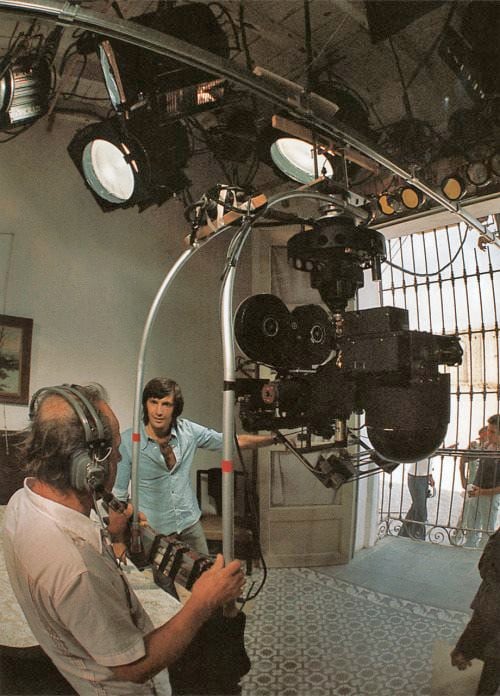
“The rail installed on the ceiling actually continues for a distance of one meter outside the window into the open. When the camera reaches the window, in order to avoid the grill which is outside the window, there is a gentle zoom to put the grill out of the frame.”
To aid in this, the large protective enclosure that normally housed the Wescam was removed to reduce the rig’s overall dimensions
The director continued: “As the camera continues to move outside, the window grill gently opens — without our seeing it — and we are now outside the room, with the camera suspended from the end of the rail. But the camera movement is supposed to continue. In order to achieve this, a high crane was been positioned behind the building in such a way that a hook at the end of a cable hanging down from the crane boom is level with the end of the rail from which the camera is suspended.”
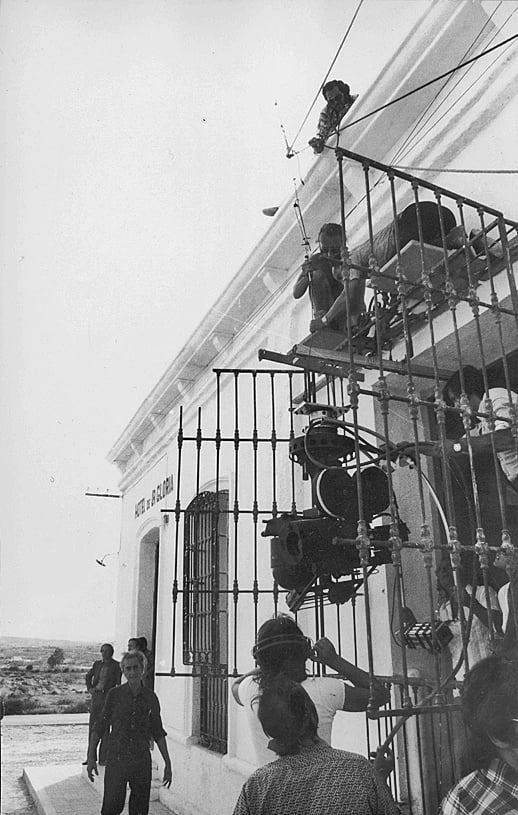
“Now, the problem at this moment was to transfer the camera from the fixed rail to the hook hanging from the end of the cable — which is not so fixed. We had two operators, two experts, sitting there waiting to take the camera from the rail and put it on the hook suspended by cable from the end of the boom. Now, how to solve the problem of avoiding a jump or jerk in transferring the rail to the cable?”

“It is here that the special [Wescam] camera, which has been made in Canada, comes to my aid, because it has gyroscopic setups and cushions in it which are shock-proof and vibration-proof. They actually absorb shock and allow a certain latitude in movements and jerks without those movements showing on the screen. This setup does the work of a DynaLens, but without using the DynaLens, and it is the thing which helped me take the camera from the rail and hook it onto the cable without showing a jerk or jump.”
Patented in the 1960s by the Dynasciences Corporation, the DynaLens was an optical stabilizing device that could be mounted on the optical axis of any camera — still or motion-picture — to compensate for image motion due to vibration.
“Now we are at the point where the camera has been installed at the end of the cable hanging from the crane boom,” Antonioni continued. “The camera had certain special handles installed on it so that it can be held steady, and there is a camera operator waiting there to hold onto those special handles. Now the movement continues and the camera moves around the square following the various characters. In the meantime, the grill in front of the window has been closed again, so that by the time the camera has done its complete movement around the square and has gotten back to this window, we see that the metal grill is closed.
“Now, how did I guide the movements of the camera and the actions of the camera operator? I was inside a van in which there was a monitoring screen — a sort of closed-circuit television monitor — on which I could see exactly what the camera operator could see in the viewfinder. Through a microphone, I could give orders to the actors, controlling their movements, and I could also give instructions to the camera operator, who would then follow and do exactly as I wanted him to do.
“The whole process took 11 days because of the precise nature of the operation and the delicacy of the [Wescam] camera, which, in spite of all the shock absorbers and gadgets, is very sensitive and has to be handled very carefully. It was especially sensitive in this case, because, in order for it to be able to go through the window grill, we had to take it out of the big, box-like blimp which ordinarily protects it. Otherwise, it could not have gone through the grill.
“Another major problem was the wind, which blew all the time and caused movement of the cable which, in turn, disturbed the movements that we had in mind. Therefore, we had to wait tor ‘windless’ moments when we could actually go on with our business.
“After we spent 11 days shooting this scene and had finally gotten what we wanted, on the 12th day there was a cyclone which destroyed the whole setup — the village, the building, everything!”
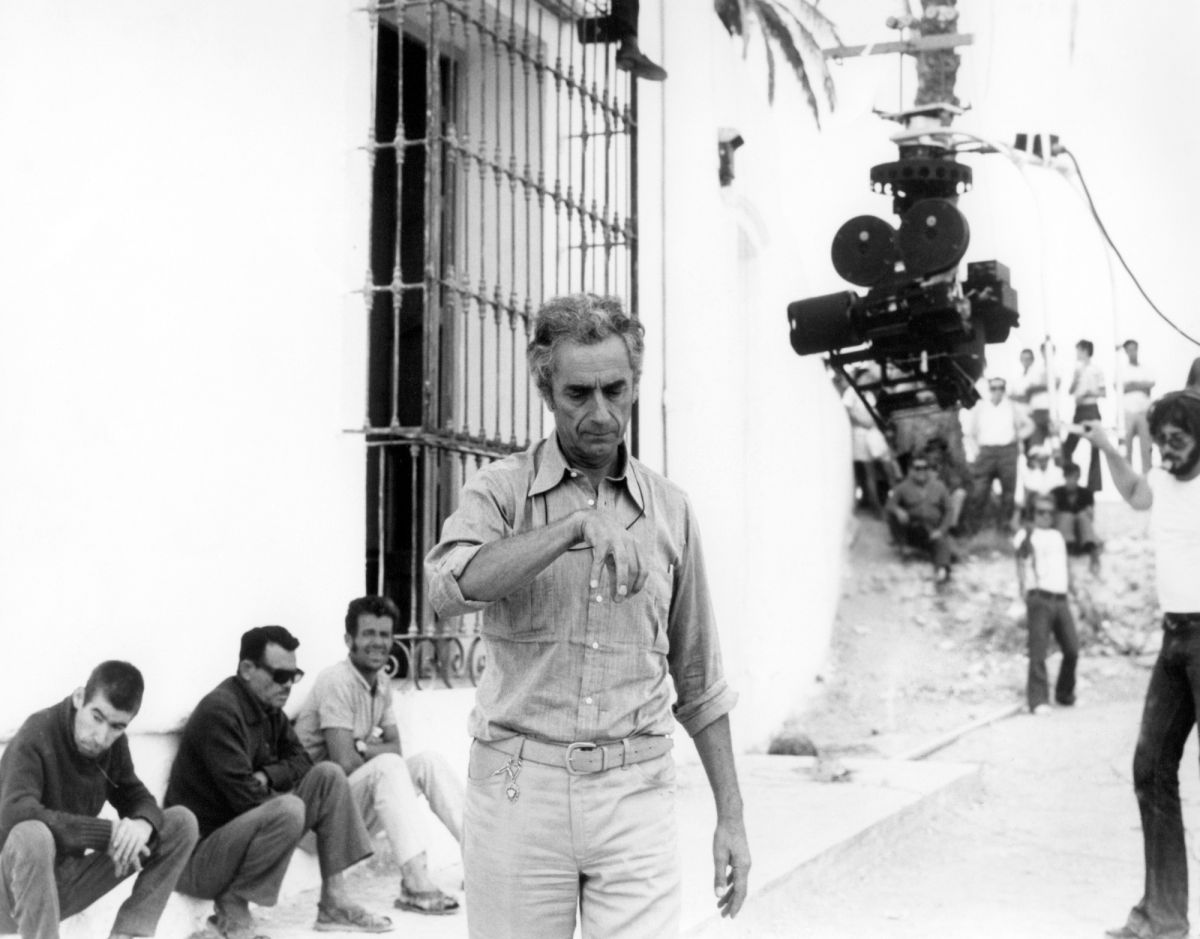
Tovoli would famously revisit this creative use of continuous camera movement in a subsequent picture, director Dario Argento’s stylish thriller Tenebre (1982), for a lengthy shot in which a woman — nervous about a series of gruesome murders — rushes to a window, launching a Louma crane shot specifically choreographed to heighten the scene’s suspense. The POV deliberately travels from the subject over her house, peering in through various windows before landing on a mysterious black-clad figure breaking into the dwelling on the other side of the structure:
Both shots remain influential reminders as to how creative inspiration and technical acumen can combine to result in great cinema.






